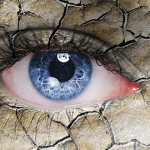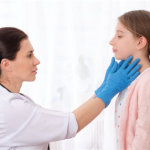Dr. Baer concluded his presentation by stating that an accurate diagnosis of Sjögren’s syndrome is essential for the successful management of the patient. A diagnosis requires multiple tests that must be performed according to published protocols. Dr. Baer also noted that because existing diagnostic tests are imperfect, their results require careful interpretation. Both diagnosis and management require multidisciplinary collaboration.
Treatment Review
Arthur Bookman, MD, coordinator of the Multidisciplinary Sjögren’s Clinic at the University of Toronto in Canada spoke next. He began by reviewing treatments for the ocular manifestations of Sjögren’s syndrome. He noted that although most clinicians will begin by treating the symptoms of dry eye and dry mouth, there is a poor correlation between these symptoms and objective measurements. In fact, one study found that only 27% of patients with Sjögren’s syndrome could be classified as sensitive to ocular dryness and 9% sensitive to oral dryness. Because of this, measures of function, such as the Schirmer’s test, ocular staining and salivary flow can be helpful in the topical management of dry eyes and dry mouth.
The symptoms of dry eye can include a foreign body sensation, photophobia and burning. Physicians should be aware that there are other possible reasons for these symptoms. Possible contributors could include incomplete lid closure—as seen in entropion with trichiasis, ectropion, exophthalmia and VII nerve palsy. Patients may also experience symptoms from allergies, preservatives in tear substitutes and corneal abrasion.
Moreover, Dr. Bookman mentioned that patients who present with the sense of gravel caught in the eyes and photophobia could have either dry eyes or blepharitis. Because blepharitis is the most common differential diagnosis in Sjögren’s syndrome, Dr. Bookman wanted to draw the audience attention to it so that they could recognize it and treat it appropriately.
Blepharitis occurs when oil glands at the margins of the eyelids are dysfunctional or plugged, causing the eyelids to become irritated and not close appropriately. Patients may also have scaling of the eyelashes, and they may complain of great distress that is only temporarily alleviated with artificial tears. Recommended treatments include hot compresses and lid scrubs with diluted baby shampoo. There are also liposomal sprays that can be sprayed on a closed eyelid. In general, he noted that optometrists can be very helpful in the management of blepharitis.
Dr. Bookman also suggested that optometrists can be helpful in navigating the multiple tear substitutes on the U.S. market, many of which come in individual-use and multi-use vials.

